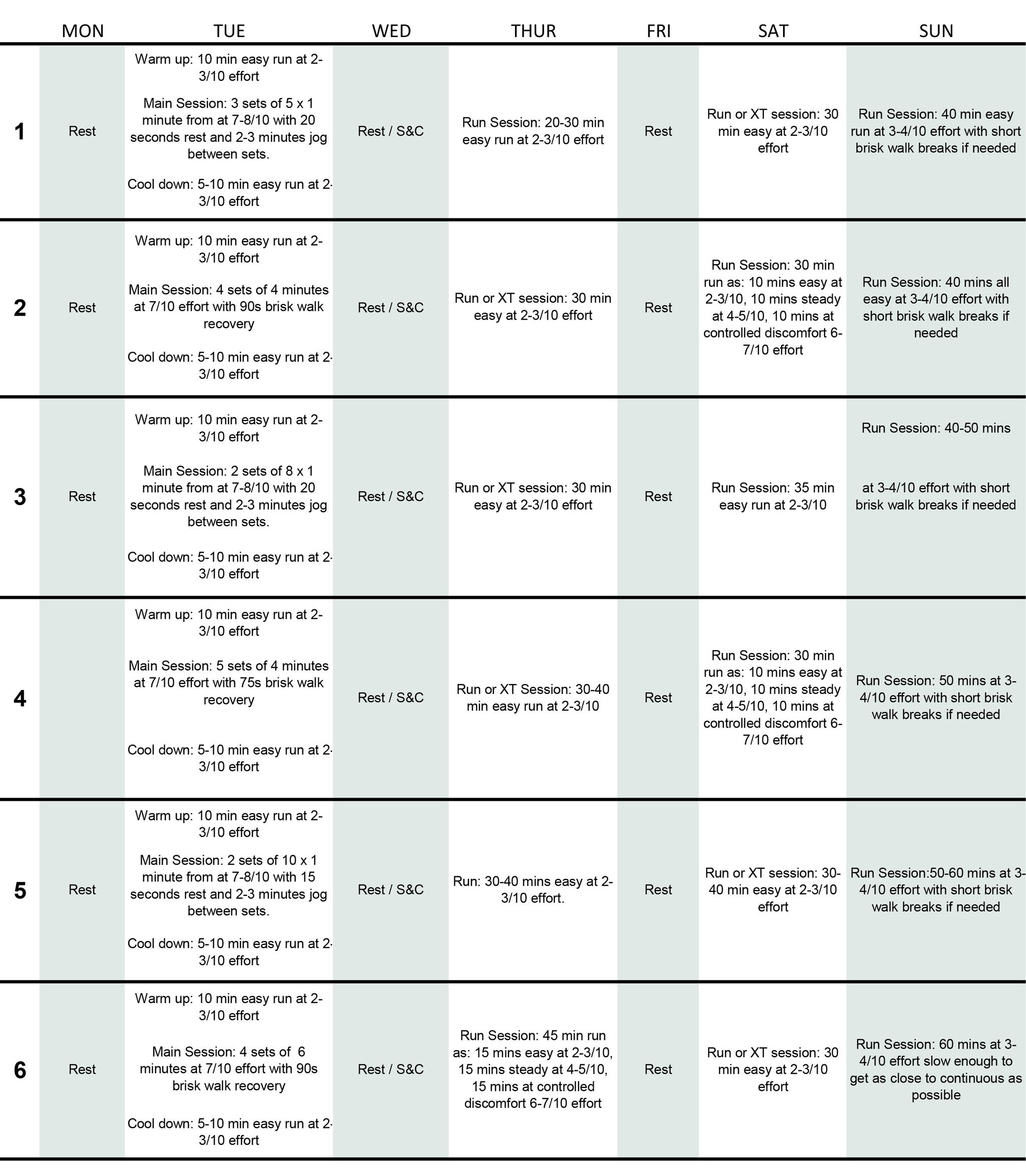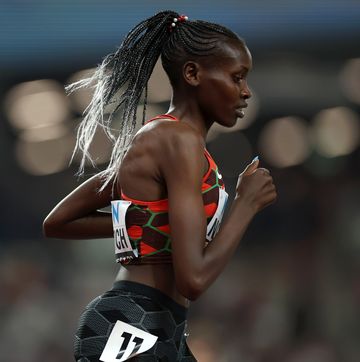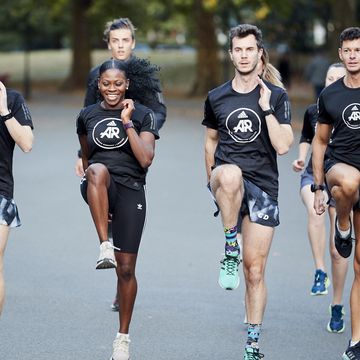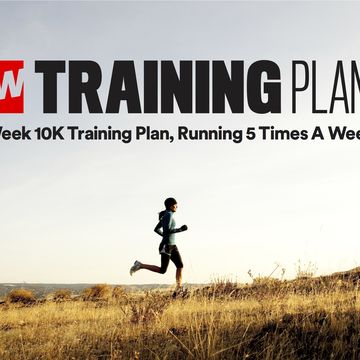So you’ve completed your first 5K, parkrun or finished a Couch to 5K plan and you want to move things on. Well, we are here to help you make the next step in your running journey and provide the bridge you need to complete your first 10K.
Are you ready to run 10K?
We need challenging but realistic goals to keep us motivated and the step up from 5km to 10km represents exactly that for many runners. If you are a goal-driven person, targeting 10km can be a really effective way to maintain and progress the healthy patterns and routines you have built up over recent weeks. It would be reasonable, though, if you have doubts: can you really look to double the distance? And in what time frame?
The good news is that you’re already over halfway there. The physical and psychological challenge of building to your first 5K, if you aren’t regularly exercising or running, is significant. While the additional 5K is undoubtedly a significant challenge, you now have a foundation in place. And, if you're sensible and planned in your approach, you should find doubling in distance a little more manageable than going from zero to 5K.
However, before you throw yourself head first into a new plan it’s worth doing a bit of a self-reflection and MOT on yourself and what life looks like for you over the coming weeks to help you decide if now is the right time; judge the following from 1 to 5:
How settled is my home and work life over the next few weeks?
1 = Stress, clutter and chaos
5 = Serenity itself
Is my body feeling pain and niggle-free?
1 = I'm creaking!
5 = Fresh as a daisy
How did I cope on my 5K training journey?
1 = To be honest, it was a slog
5 = Itching to do more
What is my available training time?
1 = Limited
5 = Free as a bird
How to go from 5K to 10K
Progressing in distance isn’t the only graduation you can make from your first 5km. You can of course choose to consolidate for a period of time. Have a look at your scores above; perhaps add some more self-reflection questions too. What are your scores?
If you’re seeing 1s and 2s, consider giving yourself a bit longer with your current training, and target another 5K race or parkrun over the coming weeks. Ultimately, if you stay consistent doing what you are doing, you are likely to continue to get fitter. You could consider focusing on getting faster at 5K as opposed to extending to 10K.
However, if you’re scoring 4s and 5s, read on for my top tips on extending your endurance and tackling your first 10K.
A 5K to 10K plan
Going from a 5K to a 10K race is an exciting milestone for newer runners. It requires dedication, patience, and a well-structured training plan, so let’s dive into a few key tips to help you bridge the gap.
Set a timeframe: We all progress at different rates. Consider your journey from zero to 5K and give yourself enough time to build your 10km pace. For some, four weeks will be enough; for others, it could be an 8-10 week process.
Try this: Check out our four-week plan below. If you feel you are not ready to start this sort of work, give yourself a few more weeks to build into it.
Sign up: Having a specific race to train for adds purpose and motivation to your workouts. Choose a well-organised race with a course that suits your preferences and abilities.
Try this: Pick a race which is a similar profile to your regular running routes… for now.
Add variety: When we build from zero to 5K, we are focusing on developing your ability to run at an easy pace for longer blocks of time. As you move to 10K, you might find a little variety in pace can help push your fitness further.
Try this: Options for increasing intensity are endless. Try some of the simple sessions below or simply a run where you aim to mix paces between 2/10 and 8/10 for short bursts of 30-90 seconds – known commonly as ‘fartlek’.
How can Fartlek help you get faster?
Easy does it: While it might seem tempting to shortcut your path to 10km by training at higher intensities, in reality, the 10km is about endurance.
Try this: While some higher-intensity sessions can be useful, these shouldn’t push you beyond 7-8/10 effort very often. Sustainable controlled work is the key to 10km success.
Everything you need to know about easy miles
Be consistent: The tip of all tips. While it’s an obvious one and most people know it already, the day-to-day consistent accumulation of running is more important than any session, long run or cross-training you might do.
Try this: Before you start, shortlist the top 3-5 things that hold back your consistency. Is it the time of day you plan to run? Your nutrition and energy levels? Trying to run too hard? Then make a plan to address these.
Everything you need to know about nutrition
Time on feet: It’ll come as no surprise that running double the distance might ask you to gradually spend a bit more time on your feet. There is no substitute for this really, and the key is finding a pattern which is manageable and achievable and running slowly enough that you are not super sore run to run.
Try this: Build your frequency first. For most people, it will be better to do 4 x 30-minute runs than one long run and one interval session a week. Think: frequency, volume, speed – in that order.
Interval sessions to build speed
Cross training: There are, however, injury risks associated with increasing the volume of your training. Cross training activities, such as cycling and swimming, are a fantastic way of progressing your endurance while managing this risk.
Try this: If you were running three times a week on your coach to 5K programme, aim to bring in one additional cross-training session a week, and then if you feel good over time an additional run.
How to cross train when injured
Introduce long runs: Longer runs help build endurance and mental strength, preparing you for the 10km distance and this is an area of difference to 0-5K. However, you don't need to go too far: remember it is the collection and consistency of your training that will see you through.
Try this: In time, long runs for 10K can extend to 90 minutes and beyond. To tackle your first 10K, though, getting to 60 minutes with minimal breaks is a great target before the race.
Remember, transitioning from a 5K to a 10K is a gradual process that requires patience and dedication. Celebrate your progress along the way and enjoy the journey to becoming a 10K runner. Good luck and happy running!













